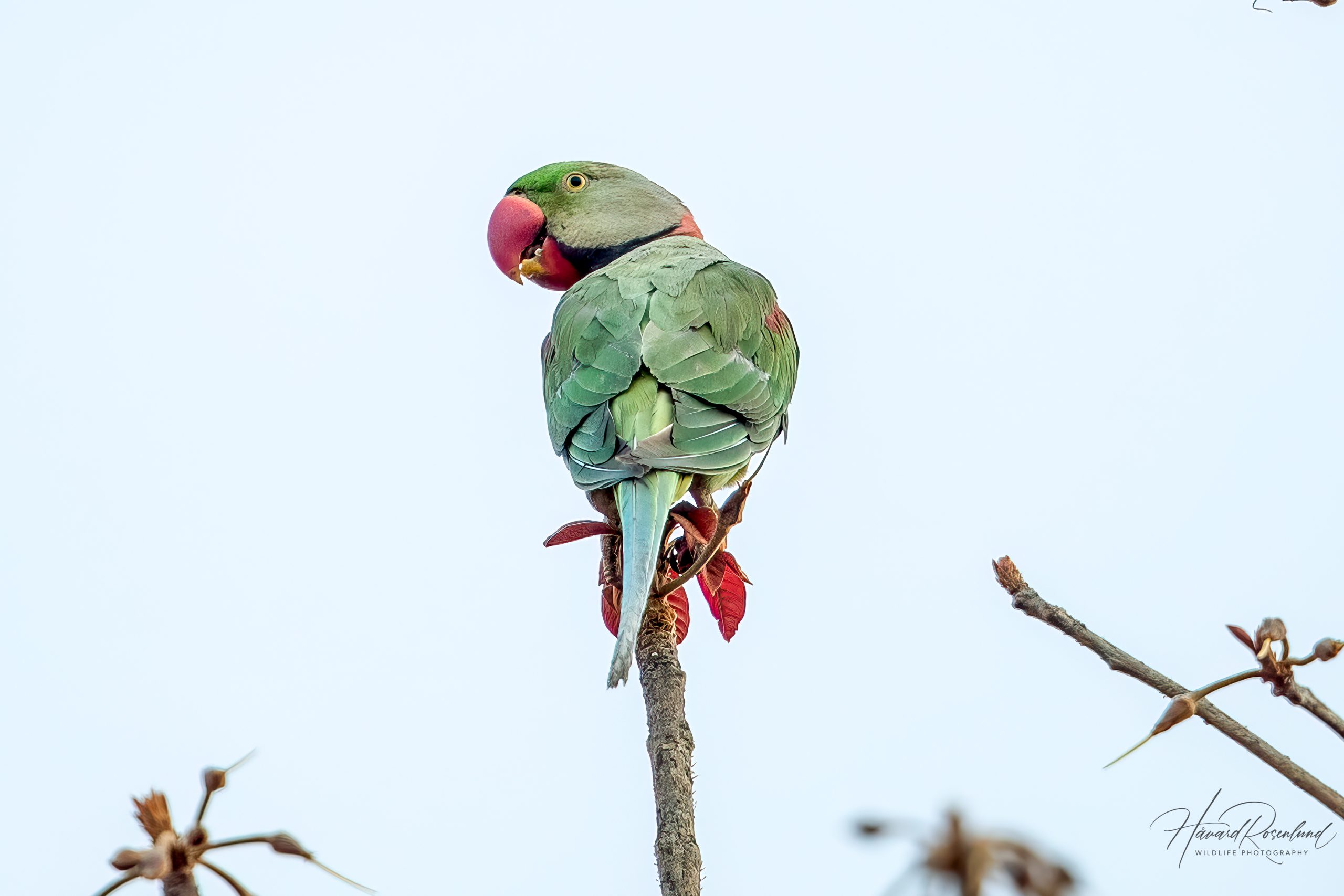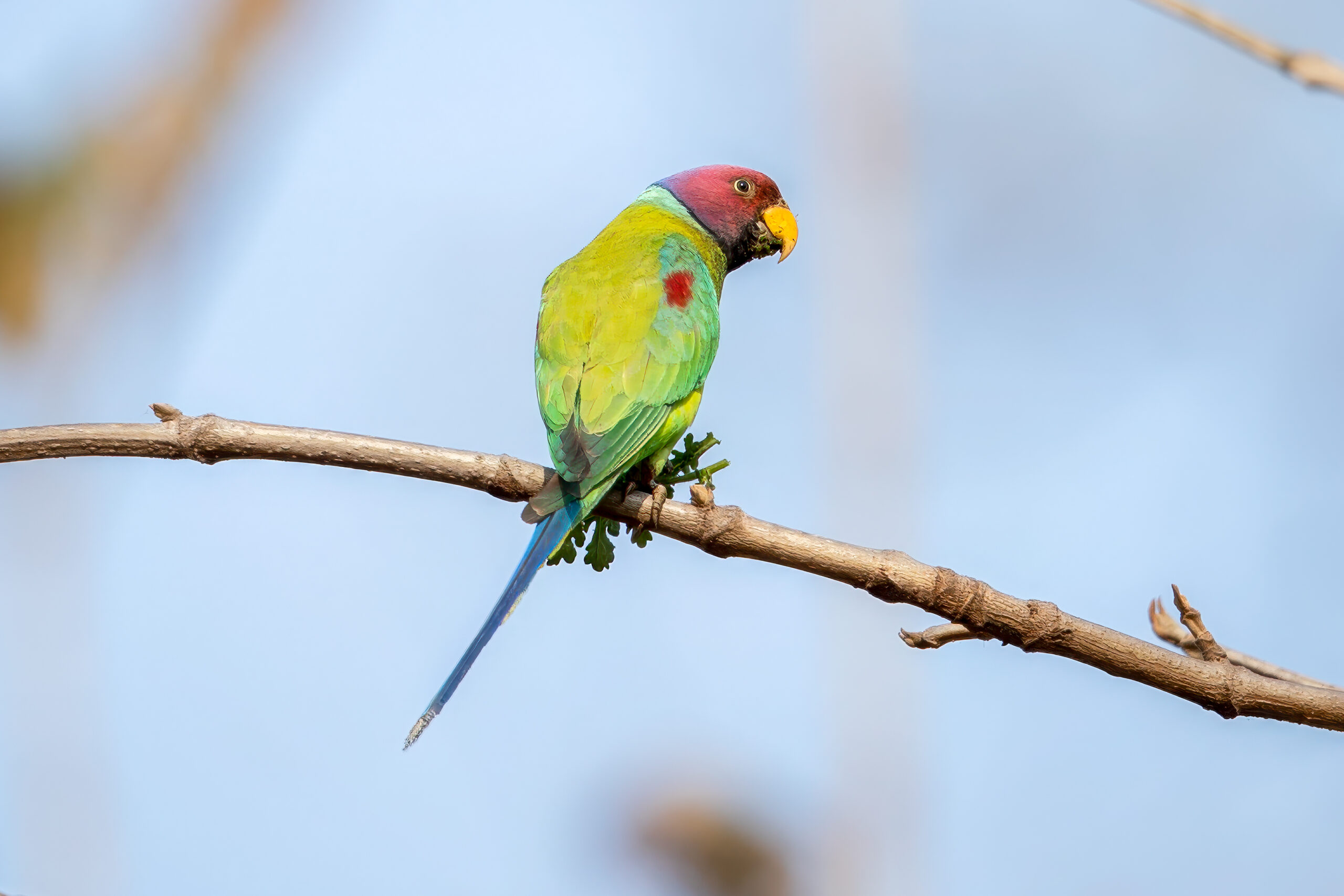Description
The Alexandrine parakeet (Psittacula eupatria) is a medium-sized parrot native to South and Southeast Asia. It can be found in regions ranging from India and Sri Lanka to Thailand and Vietnam. The species is notable for its large size among parakeets, typically measuring 58 cm (23 in) in length, including its long tail feathers. Males and females appear similar, but males can be distinguished by a prominent red patch on their shoulders, a black chin and a pink hindneck. This markings are absent in females and juveniles. The species can be confused with the rose-ringed parakeet (Psittacula krameri), but the Alexandrine parakeet is larger and has a more pronounced red beak.
The Alexandrine parakeet is named after Alexander the Great, who is believed to have transported the bird from Punjab to various Mediterranean and European regions. These birds have a long history of domestication and were prized pets among royalty and aristocracy for their striking appearance and vocal abilities.
Diet & habitat
Alexandrine parakeets are highly adaptable and can thrive in a variety of habitats, including forests, woodlands, agricultural areas, and urban environments. They primarily feed on a diet of seeds, nuts, fruits, and vegetables, with a particular preference for large seeds and nuts that they skillfully crack open with their strong beaks. They are also known to consume flowers and buds. In the wild, they often forage in groups, displaying a gregarious nature.
Behavior
These parakeets are highly social and can often be seen in flocks, especially during feeding times. They are known for their loud calls, which can be heard over long distances, and they use these calls to communicate with flock members. Alexandrine parakeets are also intelligent birds, capable of learning and mimicking human speech. In captivity, they are known to bond closely with their owners and require a significant amount of social interaction and mental stimulation.
Nesting
The breeding season for the Alexandrine parakeet typically occurs between November and April, depending on the region. They nest in tree cavities, often competing with other bird species for suitable nesting sites. The female lays between 2 to 4 eggs, which she incubates for about 24 days. During this period, the male provides food for the female. After hatching, the chicks are cared for by both parents and fledge at around 6 to 7 weeks of age.
Status
The Alexandrine parakeet is currently listed as near threatened on the IUCN Red List due to habitat loss and extensive trapping for the pet trade. While they are still relatively common in some parts of their range, their populations are declining in others. Conservation efforts are focused on protecting their natural habitats and regulating trade practices to prevent over-exploitation.







